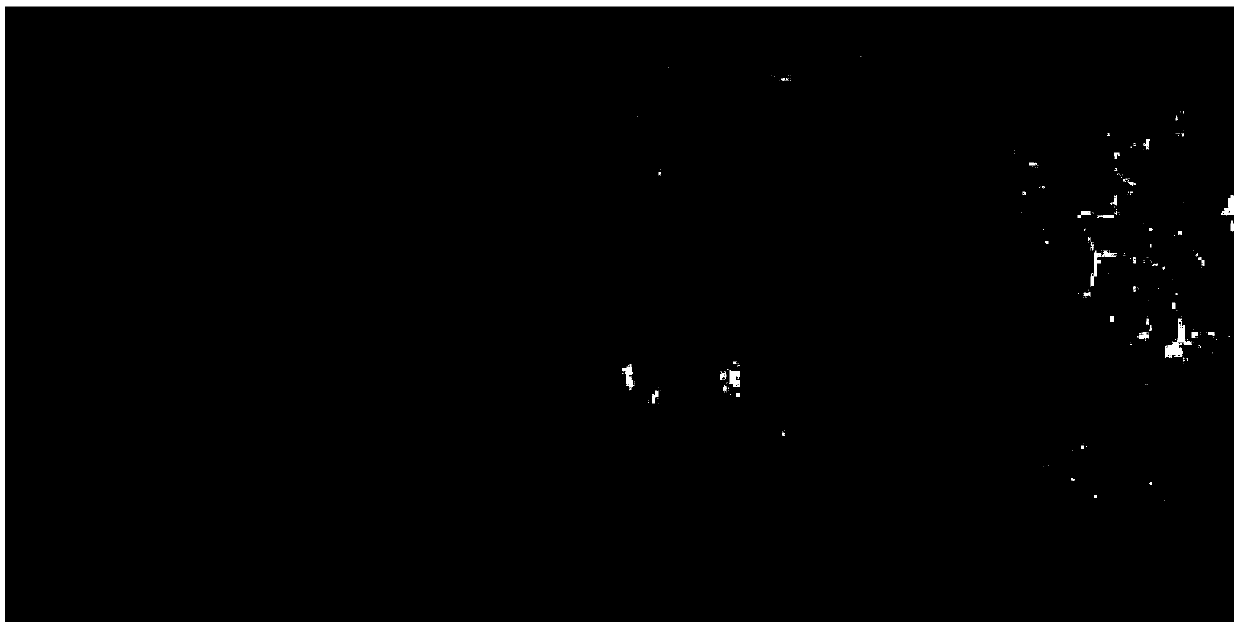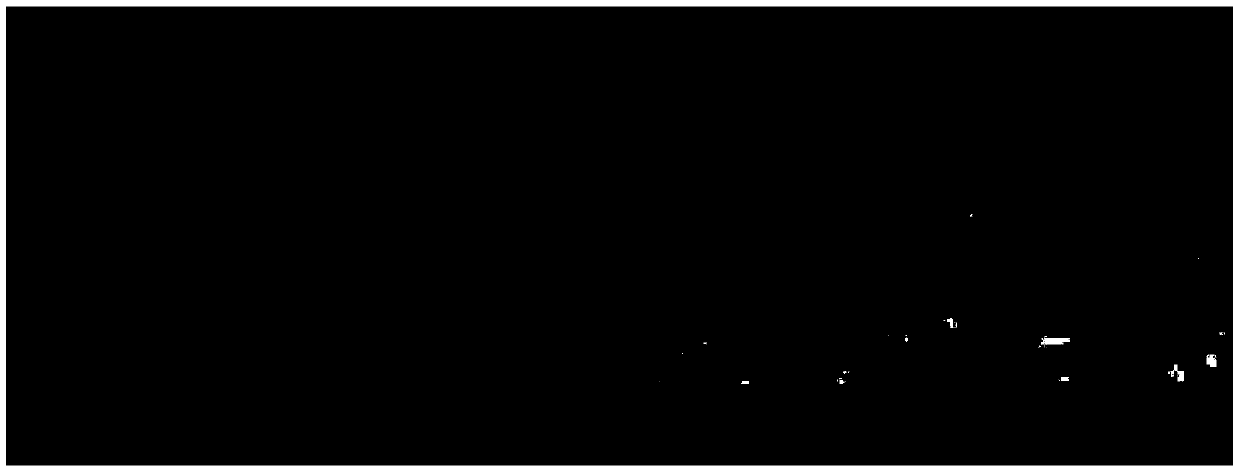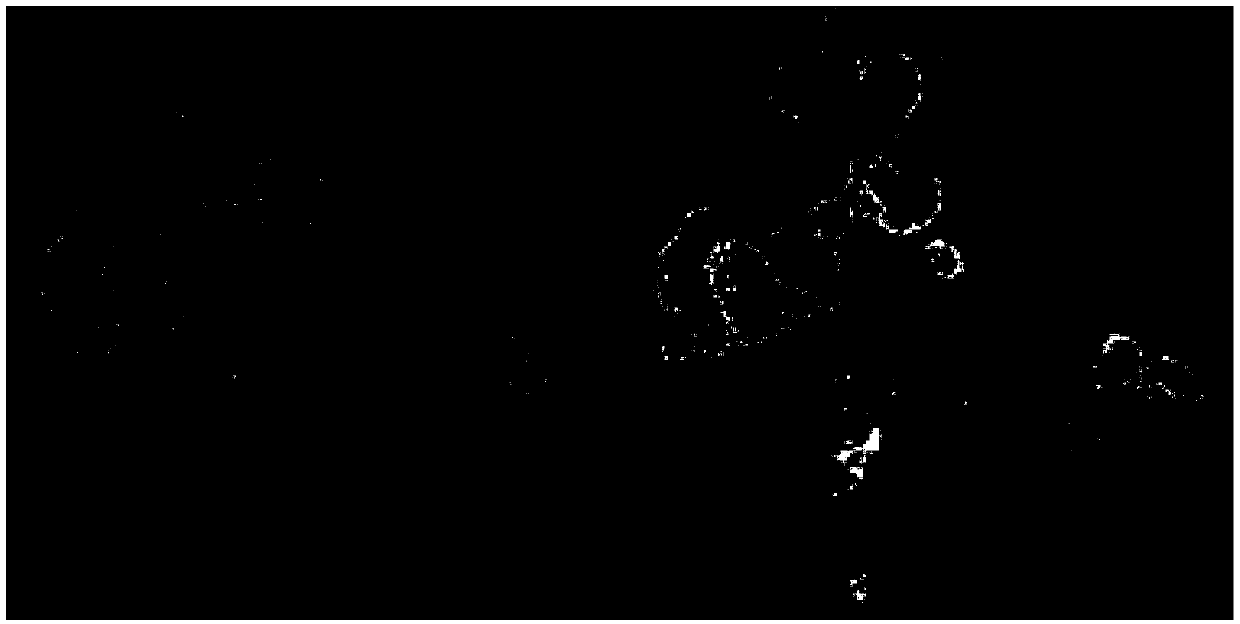A Microscopic Observation Method of Plant Tissue
A plant tissue and microscope detection technology, applied in the biological field, can solve problems affecting the analysis of plant cell structure and function, achieve good transparency, good compatibility, and cost-saving effects
- Summary
- Abstract
- Description
- Claims
- Application Information
AI Technical Summary
Problems solved by technology
Method used
Image
Examples
Embodiment 1
[0059] Embodiment 1, transparent treatment and microscope observation of Arabidopsis leaves
[0060] 1. Reagents required for transparent treatment of leaves
[0061] The fixative solution is composed of glutaraldehyde, paraformaldehyde and PHEM solution, wherein the volume percentage of glutaraldehyde is 4%, and the mass percentage of paraformaldehyde is 4%.
[0062] The PHEM solution was prepared with a final concentration of 40mM PIPES, 15mM HEPES, 5mM EGTA, 1mM MgCl 2 Composed of water with a pH of 6.9;
[0063] The transparent solution is composed of 4M urea, 20% glycerol (volume percentage), 0.1 volume% TritonX-100 and PHEM solution with final concentration.
[0064] 2. Transparency treatment and microscope observation of Arabidopsis leaves
[0065] 1. Transparency treatment of Arabidopsis leaves
[0066] Seeds of Arabidopsis (Columbian ecotype) were planted on 1 / 2 MS medium, vernalized at 0-4°C for two days, germinated in an incubator at 23±2°C, and moved to culture s...
Embodiment 2
[0074] Embodiment 2, the distribution of chloroplast in the mesophyll cell of Shallot onion
[0075] 1. Reagents required for transparent treatment of leaves
[0076] The fixative solution is composed of glutaraldehyde, paraformaldehyde and PHEM solution, wherein the volume percentage of glutaraldehyde is 4%, and the mass percentage of paraformaldehyde is 8%.
[0077] The PHEM solution was prepared with a final concentration of 60mM PIPES, 25mM HEPES, 10mM EGTA, 2mM MgCl 2 Composed of water with a pH of 6.9;
[0078] The transparent liquid is composed of 6M urea, 30% glycerol (volume percent), 0.1 volume percent TritonX-100 and PHEM solution with a final concentration of 6M.
[0079] 2. Transparency treatment and microscope observation of the leaves of scallion
[0080] Cultivate the scallions to a height of 20-30cm, and get the aerial parts of the seedlings;
[0081] 1) Cut the above-mentioned scallion leaves into 0.8cm long segments, wash with deionized water until the s...
Embodiment 3
[0089] Example 3, the distribution of REMORIN protein in tobacco mesophyll cells
[0090] 1. Reagents required for transparent treatment of leaves
[0091] The fixative solution is composed of glutaraldehyde, paraformaldehyde and PHEM solution, wherein the volume percentage of glutaraldehyde is 5%, and the mass percentage of paraformaldehyde is 5%.
[0092] The PHEM solution was prepared with a final concentration of 60mM PIPES, 20mM HEPES, 10mM EGTA, 2mM MgCl 2 Composed of water with a pH of 6.9;
[0093] The transparent liquid is composed of 6M urea, 20% glycerol (volume percentage), 0.1 volume% TritonX-100 and PHEM solution with final concentration.
[0094] 2. Transparency treatment and microscope observation of tobacco leaves
[0095] Tobacco seeds are germinated at 20-25°C. After the seeds germinate, they are planted in flower soil in a greenhouse at 25±2°C, and cultivated to a plant height of 5-10cm.
[0096] 1) Shake culture the Agrobacterium strain carrying the RE...
PUM
| Property | Measurement | Unit |
|---|---|---|
| thickness | aaaaa | aaaaa |
Abstract
Description
Claims
Application Information
 Login to view more
Login to view more - R&D Engineer
- R&D Manager
- IP Professional
- Industry Leading Data Capabilities
- Powerful AI technology
- Patent DNA Extraction
Browse by: Latest US Patents, China's latest patents, Technical Efficacy Thesaurus, Application Domain, Technology Topic.
© 2024 PatSnap. All rights reserved.Legal|Privacy policy|Modern Slavery Act Transparency Statement|Sitemap



